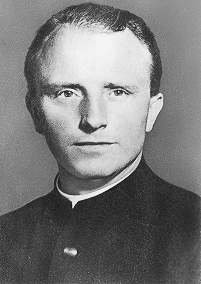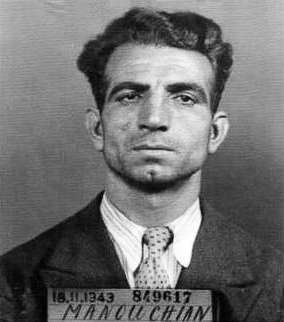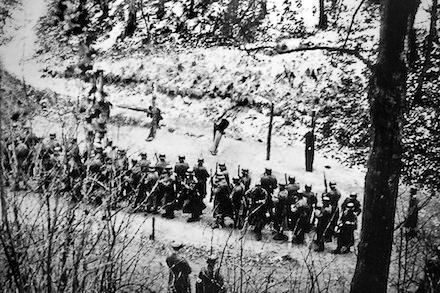The subject of our blog post today was given two monikers by the French: L’Aumonier de l’enfer or, the “Minister in hell” and L’Archange des prisons or, the “Archangel of the prisons.” Many people in the Catholic Church would like to give him a third one: “Saint” but I decided to choose “Archangel” to be the title of this blog. However, of the two French names, considering the tactics and ruthlessness of the Nazis and Gestapo in particular, the first title might have been more appropriate.
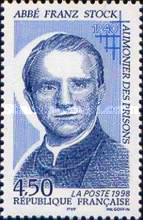
Did You Know?
Did you know that even government postal services make mistakes? If you didn’t, then you’ve never had your mail delivered to the wrong address or vice versa. Well, the Royal Mail of Britain just made a major blunder.
To commemorate the 75th anniversary of the D-Day landings (6 June 1944), the Royal Mail designed a stamp using a photo of American troops knee-deep in water as they left their landing craft to storm the beach. The stamp’s caption reads, “D-Day: Allied soldiers and medics wade ashore” ⏤only one problem.
The image used was a landing sometime in May 1944 in Dutch New Guinea (part of Indonesia). It was not Normandy. Almost immediately, social media was atwitter with comments about the errors (it’s easy to determine the landing craft were different than those used on the Normandy beaches and the men getting off are medics carrying stretchers).
I collect stamps (a dying hobby like model trains and bridge playing I suppose). Since stamps were invented, there have been some real whoppers of mistakes. Take for example, the American “Inverted Jenny” stamp with an upside-down aircraft (no, it wasn’t meant to honor air shows). Today, a mint and never-hinged inverted jenny stamp is worth around $1.6 million. Britain is also known for mistakenly issuing stamps without the head of the monarch (if it was King Charles I, it wouldn’t have been a mistake) or without perforations along the edges. This time however, the Royal Mail caught the problem before any stamps were printed and got out into the public.
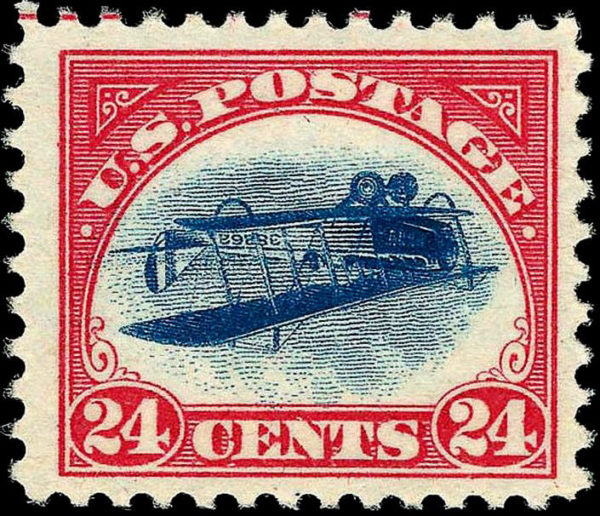
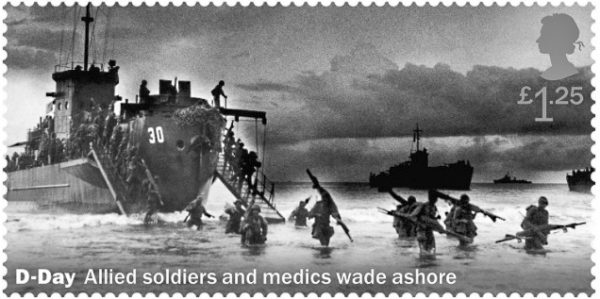
Too bad for us collectors (and the auction houses). So, the next time it happens, would all of you on social media please be quiet and don’t say anything ⏤ it ruins the fun (and our bank account).
Let’s Meet Abbe Franz Stock
Franz Stock (1904-1948) was born in a small village in Germany along with eight other brothers and sisters. Attending a Catholic-run elementary school, Franz made the decision to become a priest by the time he was twelve. In his early twenties, Franz entered the Catholic seminary in Paderborn, Germany. Several years later, Franz moved to Paris where he spent several years studying at the Institut Catholique (reportedly, he became the first German student of theology in France since the Middle Ages). Ordained in March 1932, Father Franz was assigned to the town of Effeln, northeast of Dusseldorf, Germany. Two years later, Franz returned to Paris where he lived at 23, rue Lhomond (5e) while serving as rector to the German parish.
